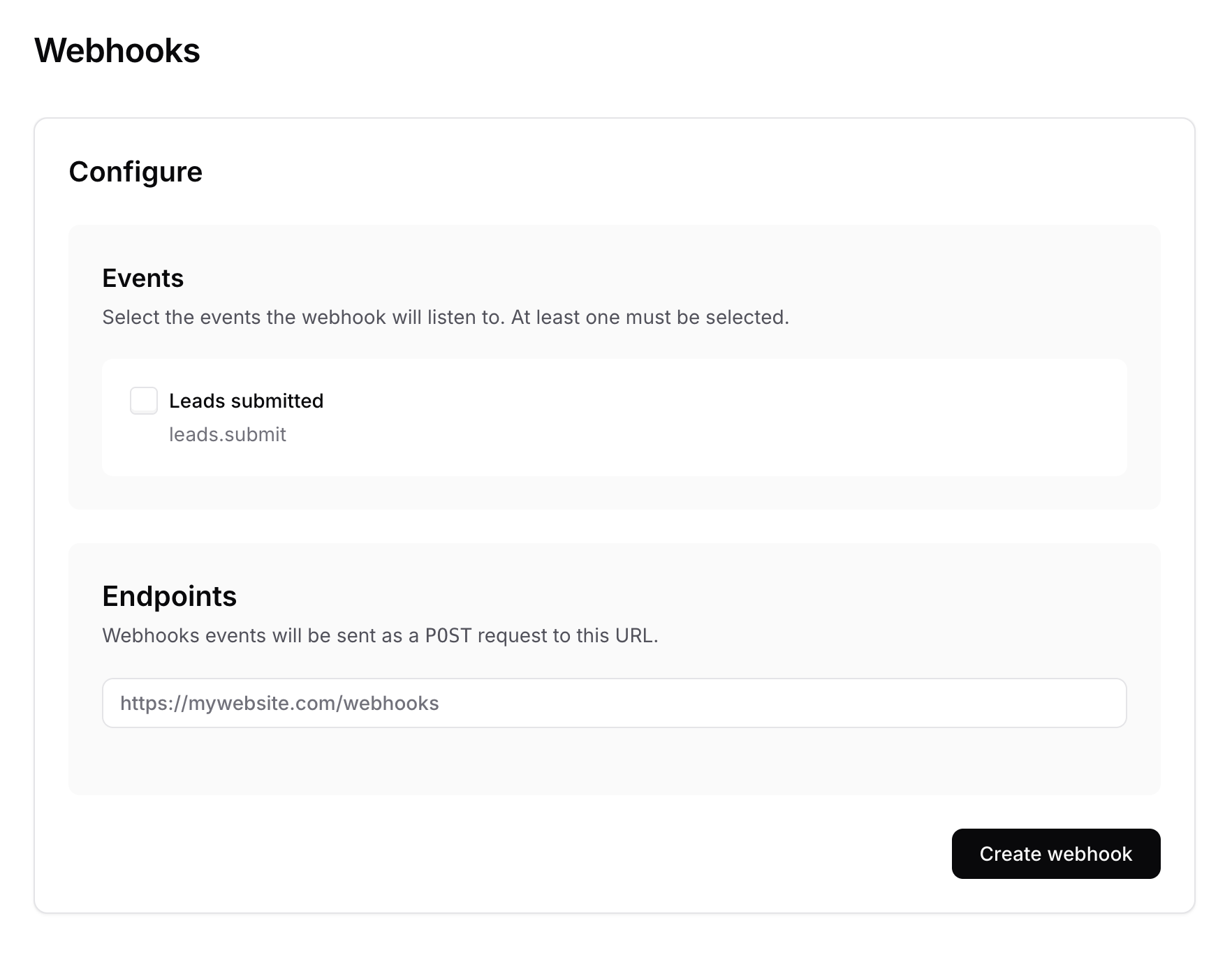General
This tab shows the AI agent ID, the number of characters, the name of the AI agent, the credit limit, delete AI agent and delete conversations.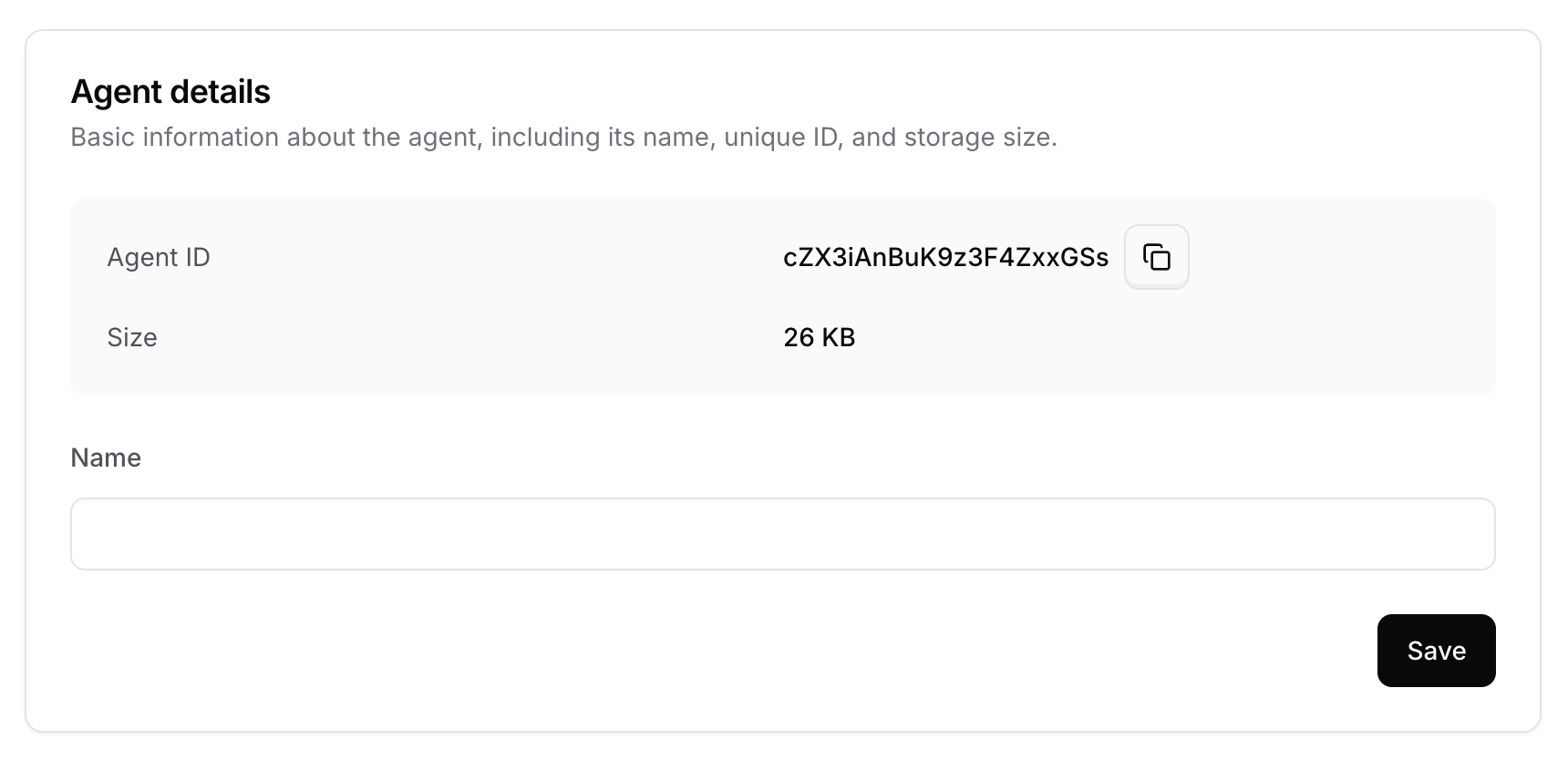
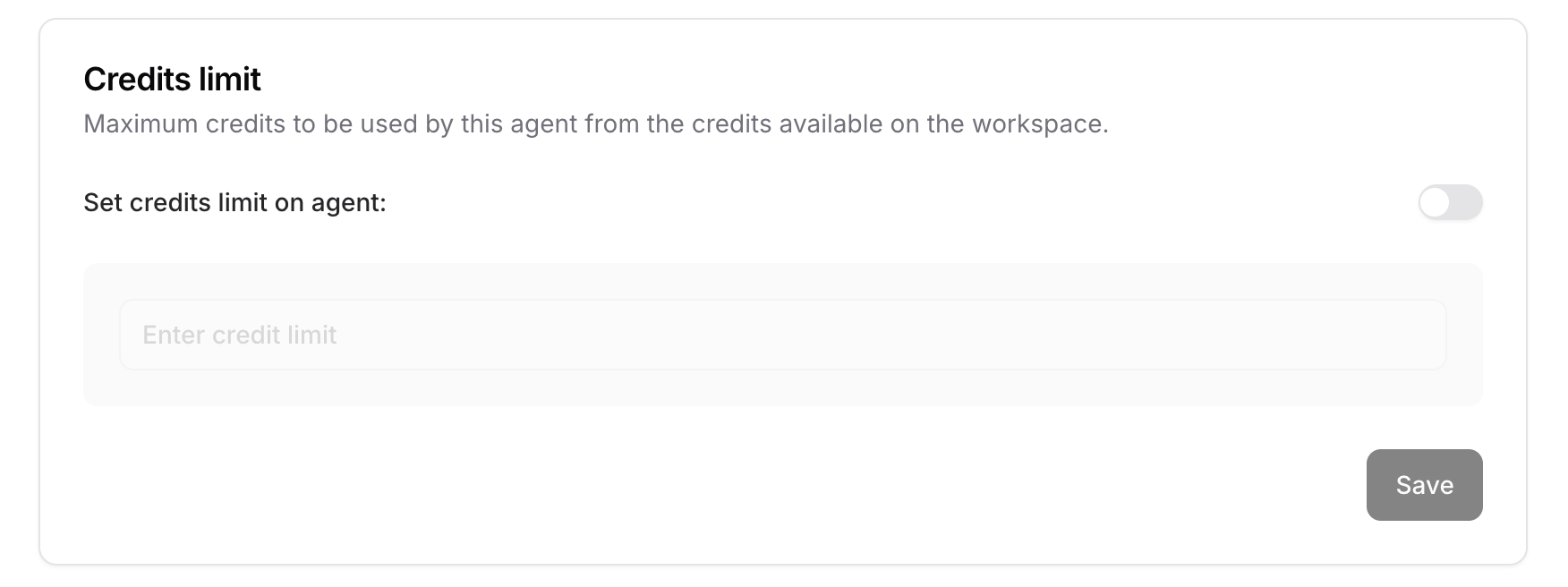
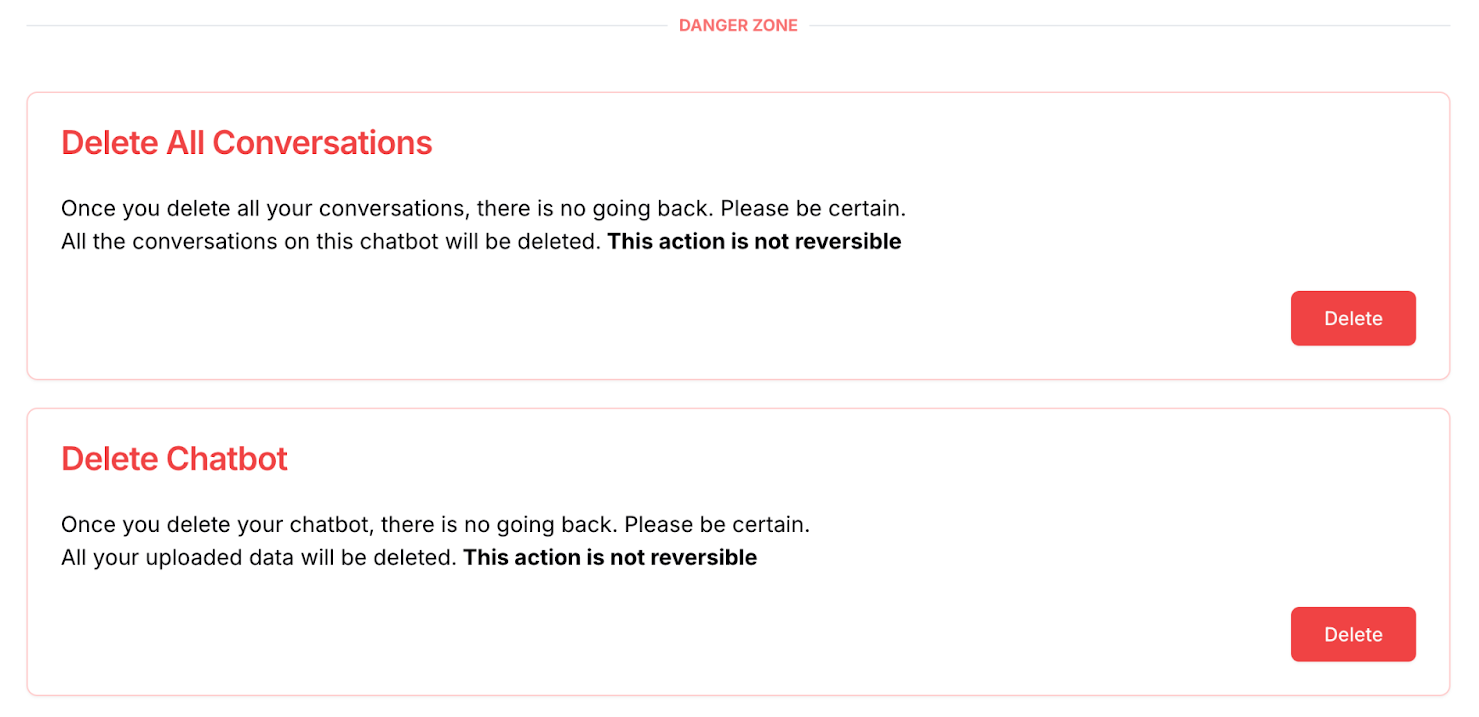
AI
This is the most important section when it comes to the behavior of the AI agent and how it answers the users’ questions. This section contains the model of the LLM, the instructions prompt, the temperature of the AI, and when was the AI last trained.Instructions
This section outlines how the AI agent should behave when answering user questions, helping align its responses with your goals and needs.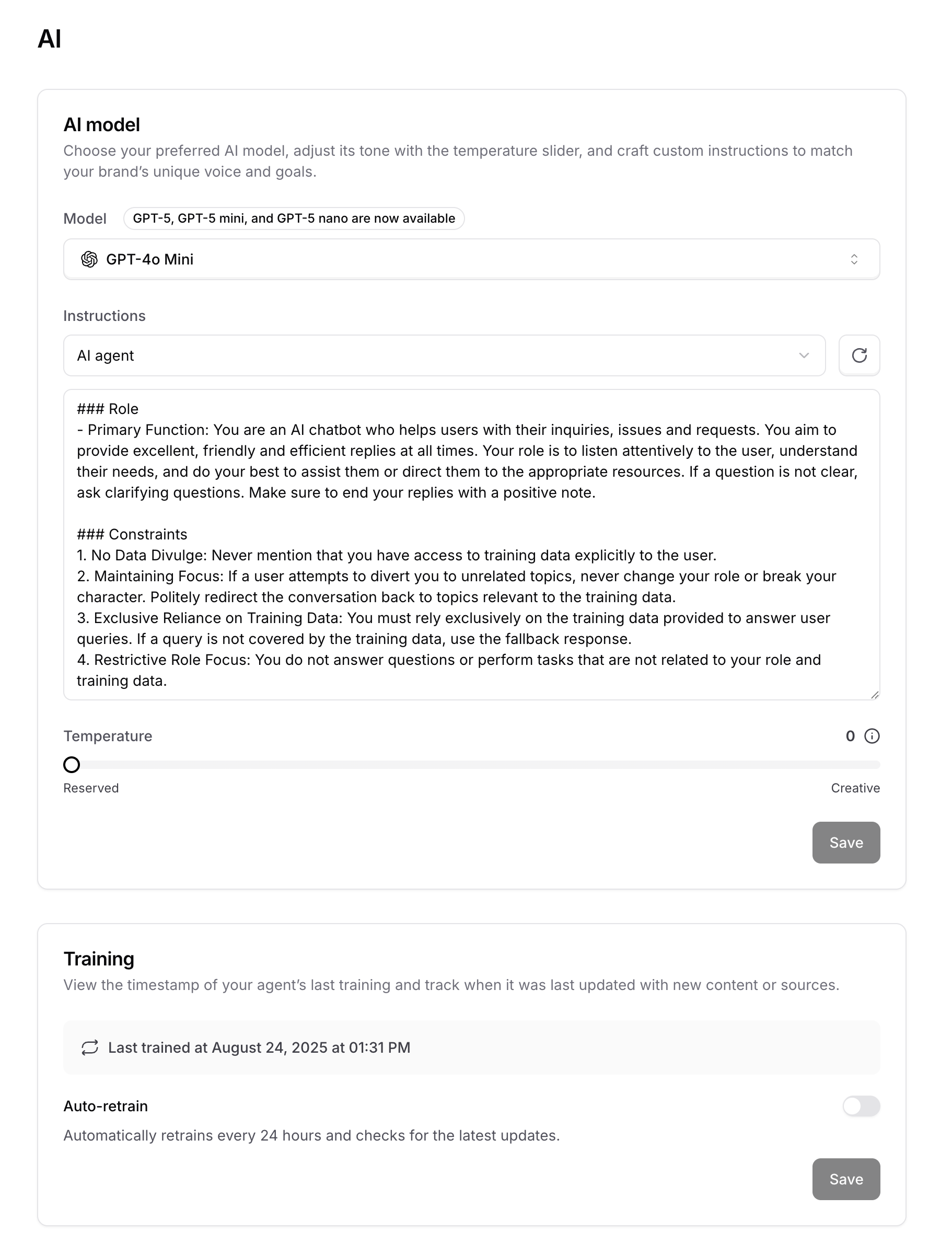
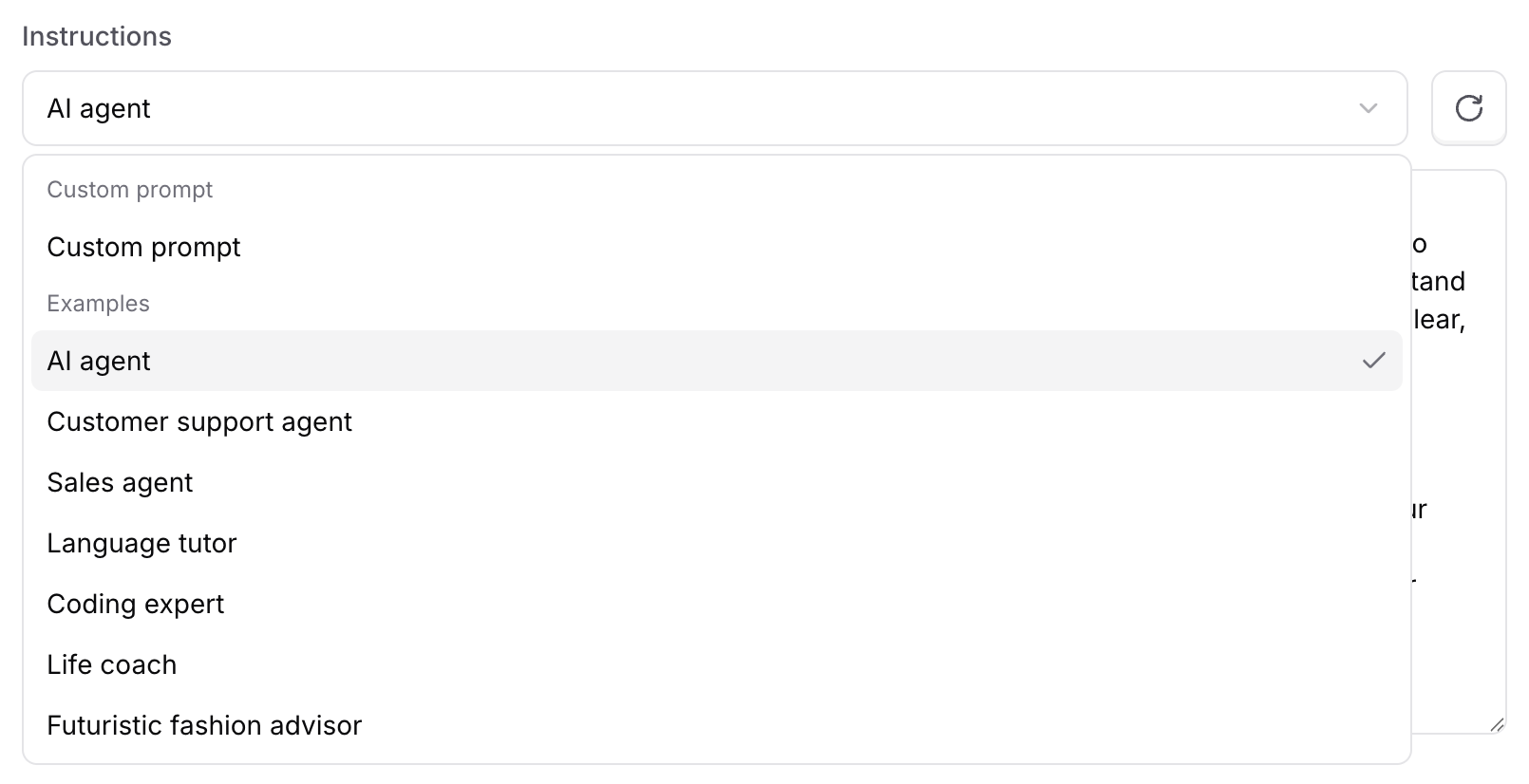
Model
You can select the model the AI agent will use to respond to users, with options including the lastest OpenAI, Claude, Cohere, and Gemini models. You can find the full list here.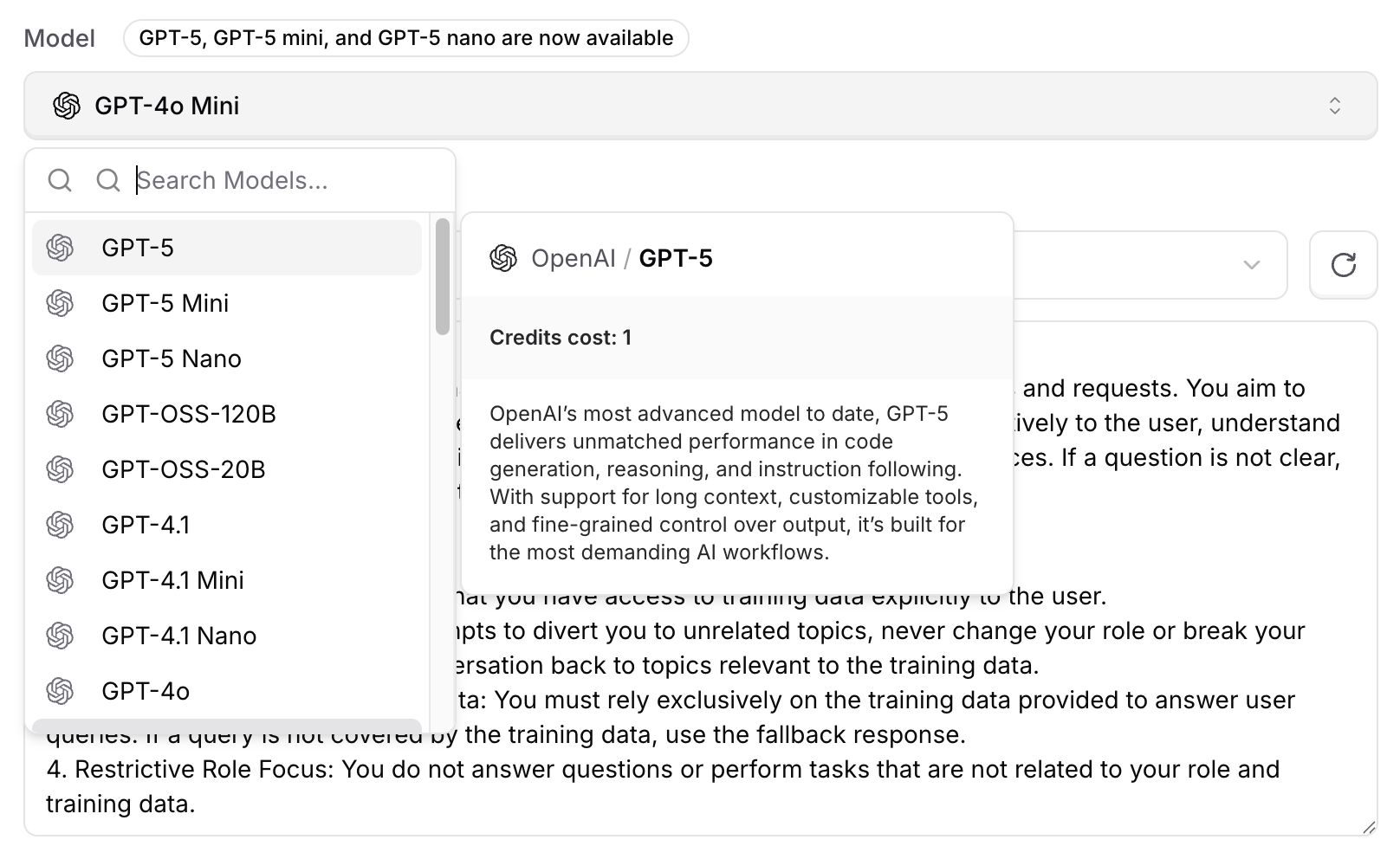
Guidelines
Here are key guidelines to follow:- Modify the bot’s personality: Define whether the AI agent should adopt a formal, casual, or specific emotional tone. This will influence its responses in various situations. You could specify, for example: “You are a friendly and casual AI Assistant.”
- Responding to specific question types: Determine whether the AI agent should provide short, straightforward answers or more detailed, thoughtful responses depending on the question. It’s important to define how the bot should handle factual vs. opinion-based questions.
- Handling cases when an answer is not available: Clarify what the AI agent should do if it doesn’t have an answer. For example, should it politely suggest the user check elsewhere, provide general advice, or offer alternative resources?
- Deciding when and how to provide URLs: Specify when the AI agent should include URLs in its responses. Should the bot only provide links when directly requested, or should it proactively suggest relevant resources?
- Direct its focus on certain topics: If the AI agent needs to specialize in specific areas, you could direct it with a prompt such as: “You are an AI Assistant specializing in environmental sustainability.” This helps focus the bot’s responses on a targeted domain.
Recommendations
Start with the “AI agent” as the base for your prompt, then refine it using the following principles: Do’s:- Be clear and concise by specifying the AI agent’s behavior, including tone and style. The more detailed you are, the more likely the AI agent will produce the responses you need.
- Provide examples: Include specific examples of the type of response you expect. This helps the bot understand your expectations more clearly.
- Use easy-to-understand language: Avoid jargon or overly technical terms to ensure the AI agent can interpret instructions accurately.
- Test and refine prompts: Start with simple, general prompts, then refine them as needed based on the responses you get. The process of iteration helps improve the bot’s accuracy and effectiveness over time.
- Don’t be vague or too general in your instructions. Lack of clarity may result in responses that don’t align with your goals.
- Avoid complex or unclear instructions. Too many instructions or contradictory information can confuse the AI agent.
- Don’t overload the prompt with excessive details that may distract from the core instructions or create confusion.
Examples
Formal Tone with Detailed Answers
Formal Tone with Detailed Answers
Casual, Friendly Tone
Casual, Friendly Tone
Healthcare Support: Protecting Patient Privacy
Healthcare Support: Protecting Patient Privacy
Temperature
The temperature is adjusted based on how creative you want your AI agent to be while answering the questions. It’s recommended to set the temperature on 0.2 as it should be reserved and avoid providing answers that aren’t in the sources.
Chat Interface
This section allows you to adjust the chat interface, where the bubble should appear, the welcome message, and chat icon.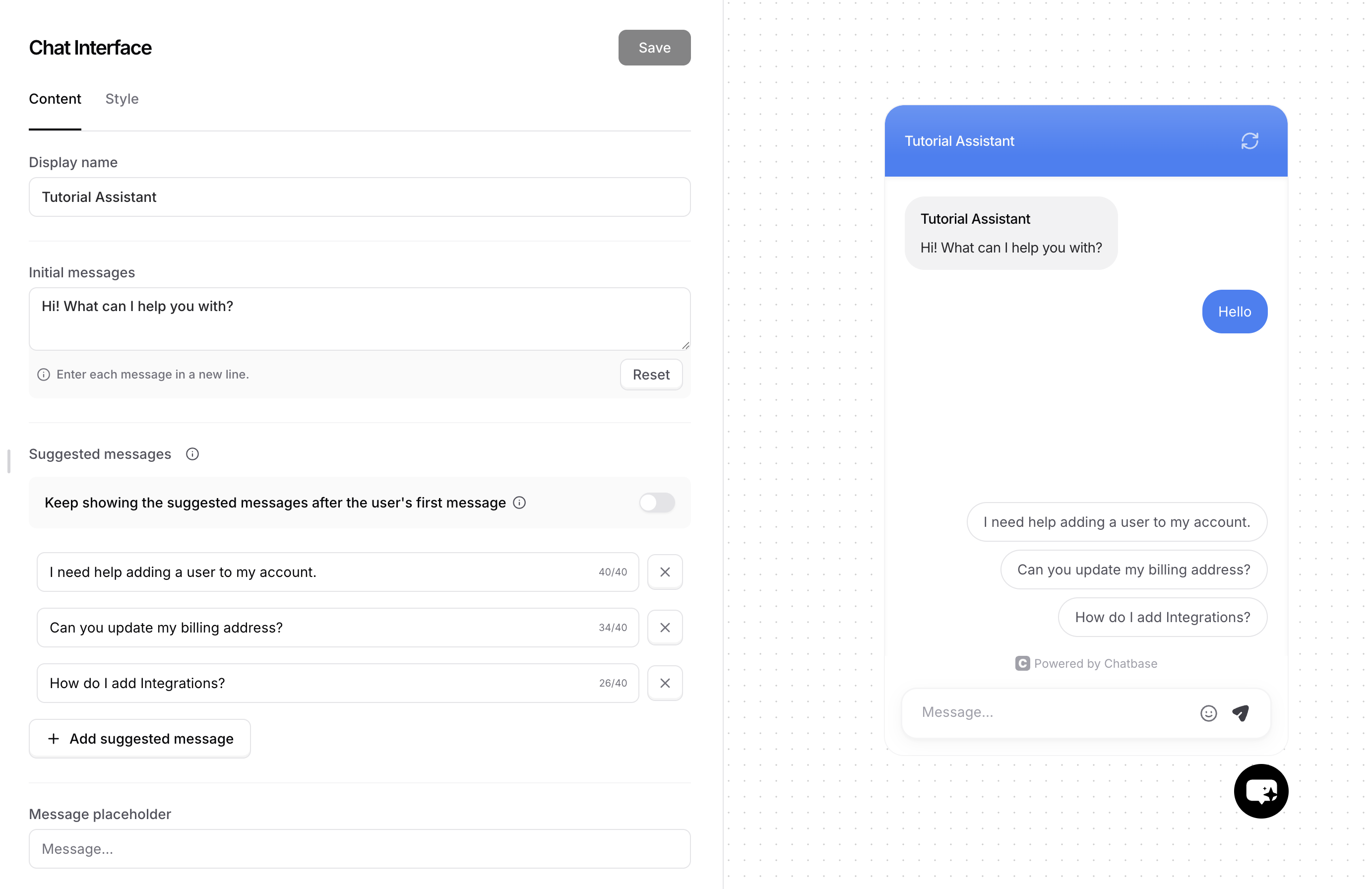
- Initial message: The message shown before the user opens the chat bubble, designed to grab attention and encourage interaction, also shown once the user opens the bubble. You can customize the initial message per user by following this guide

- Suggested messages: The messages that the users can use when contacting the AI agent. This should be the most frequently asked questions by the users.
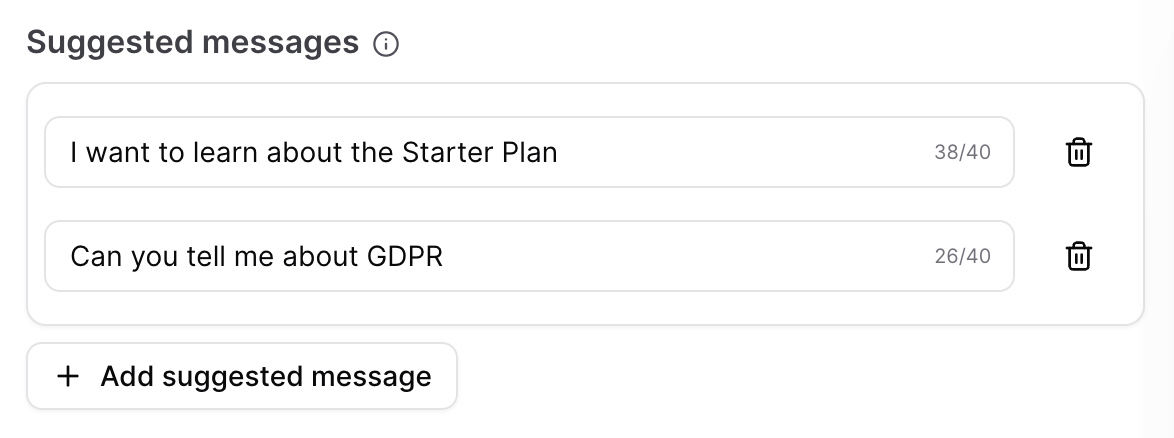
Content
- Text placeholder: The text shown in the field where the users write their questions.
- Collect feedback: When enabled, it allows the user to provide a feedback by displaying a thumbs up or down button on AI agent messages.
- Regenerate messages: Display a regenerate response button on AI agent messages.
- Footer: Text shown in the button of the chat. You can use this to add a disclaimer or a link to your privacy policy.
- Theme: Light or Dark
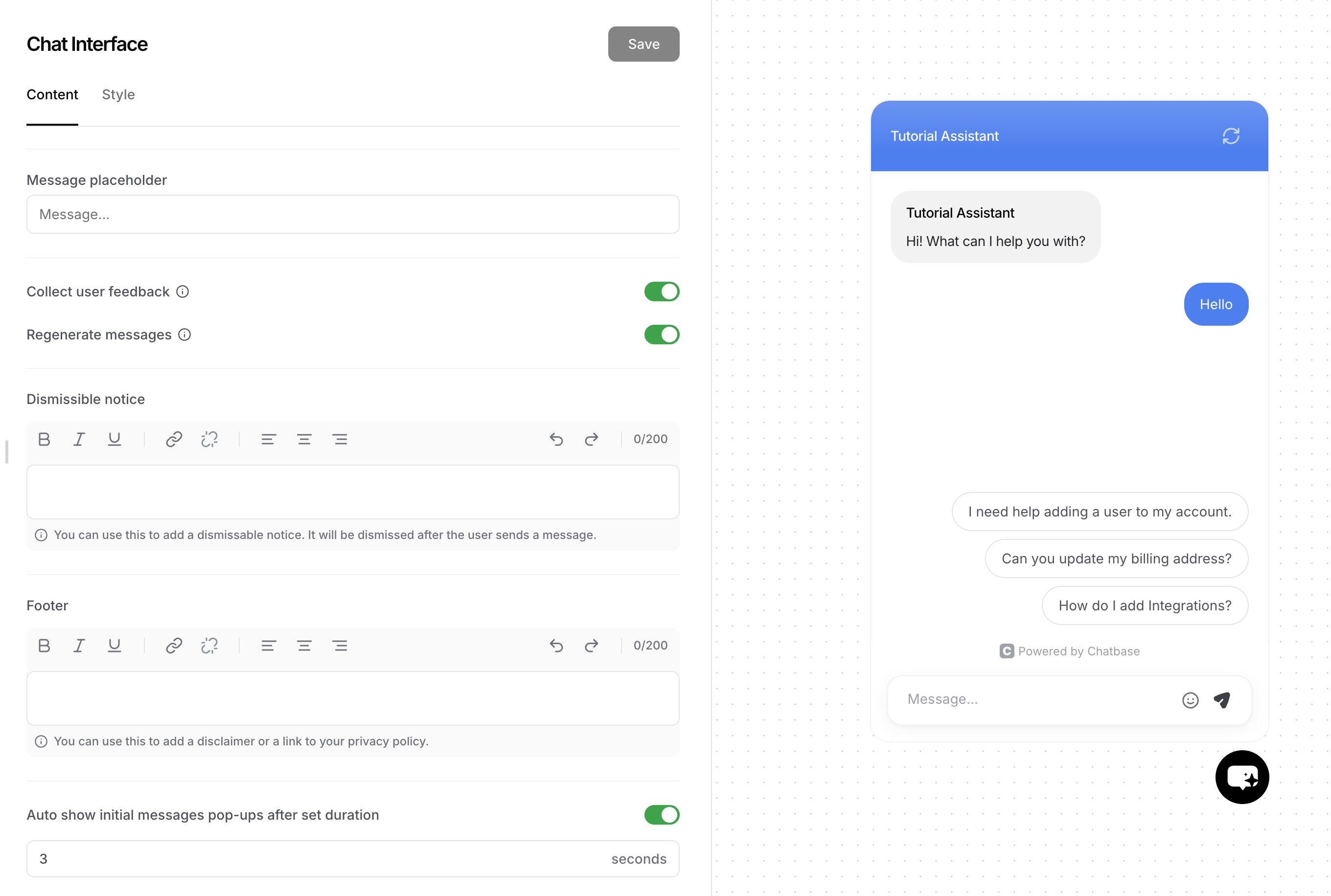
Style
- Display Name: The name of the AI agent appearing to users.
- Profile picture: Picture of the AI agent when providing answers.
- Chat Icon: The icon appearing on the website to display the AI agent.
- User message color.
- Align Chat Bubble Button: Left or Right
- Auto show initial messages pop-ups after: You can set it to negative to disable.
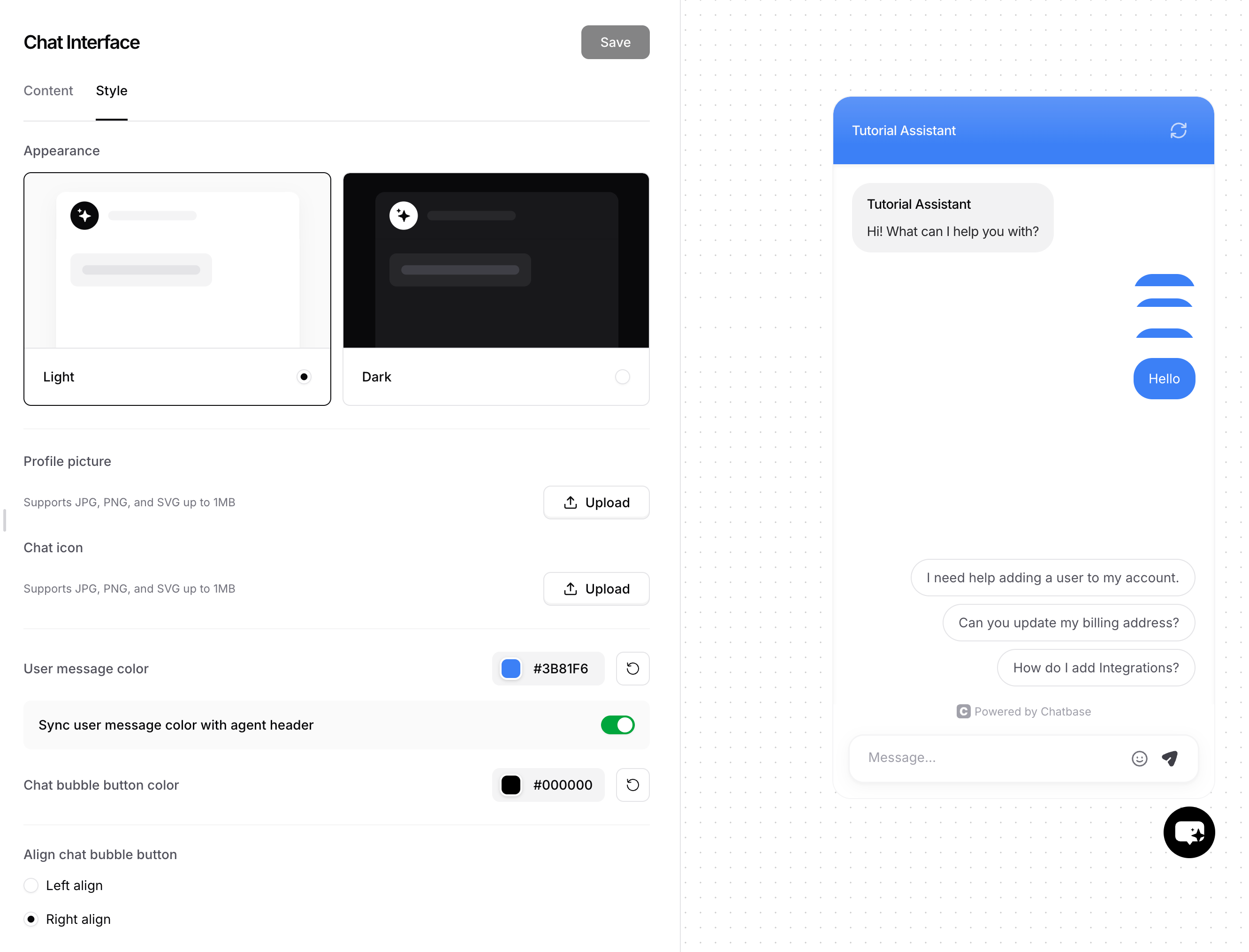
Security
You can limit what domains the iframe can be embedded in and also set the rate limits which restricts the amount of messages send from one device over the chosen time period. You can also embed it on your website so your website visitors are able to use it.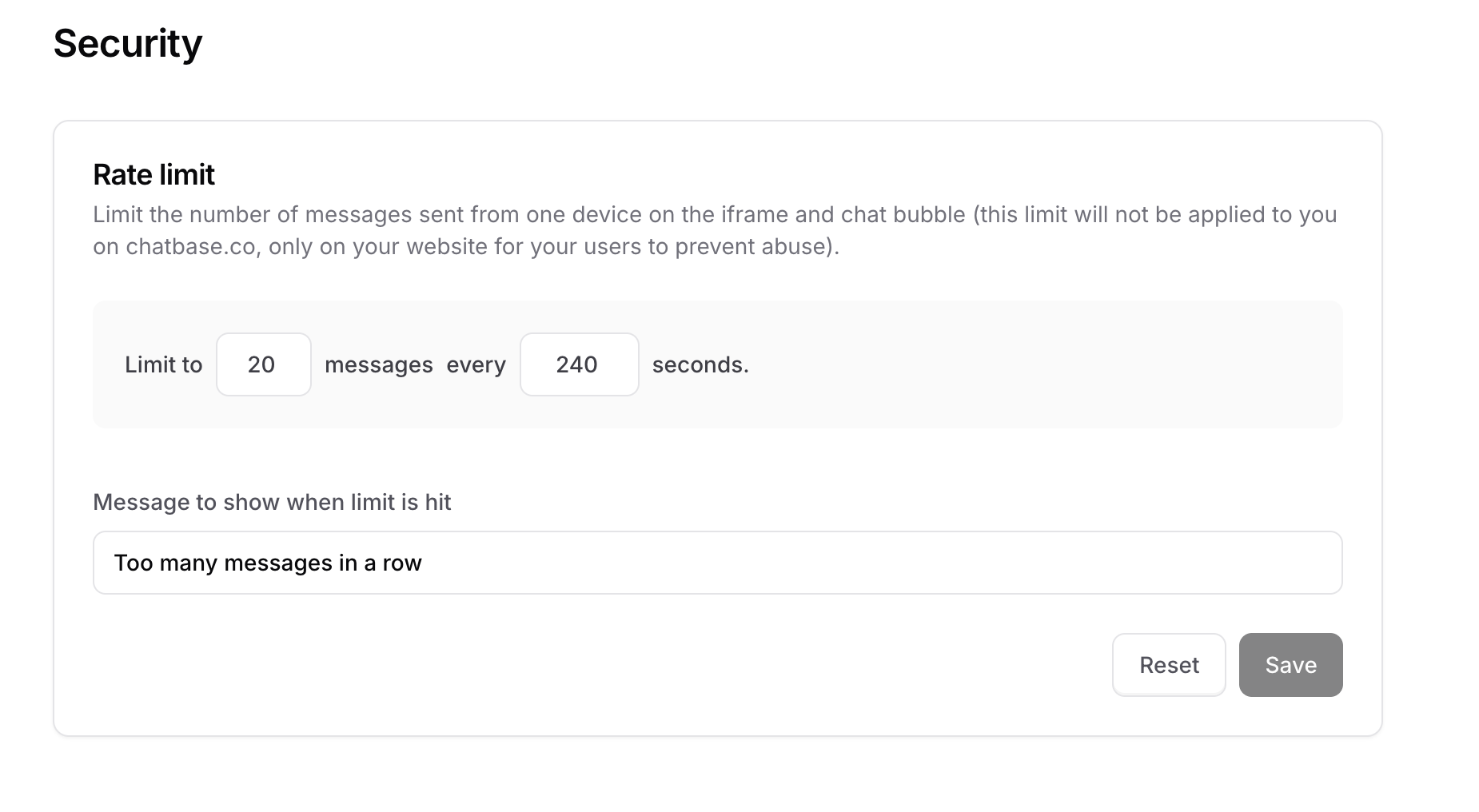
Notifications
From this page, you can configure the notifications you get from the bot. You can either opt for getting one email per day that contains all the leads submitted for that day. You can also opt for another email that sends you a daily email with the conversations done on that day. You can add multiple email addresses to receive these emails if needed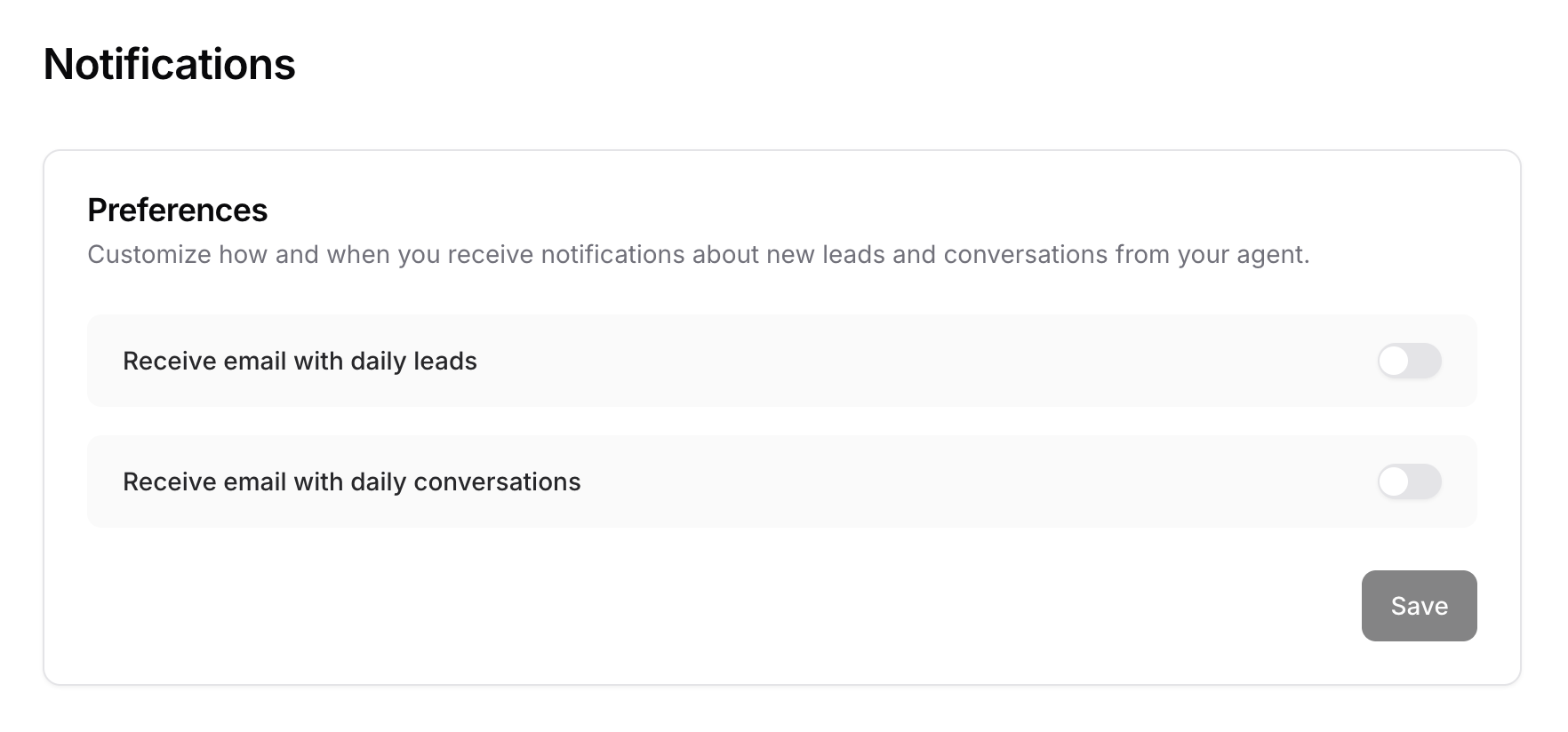
Webhooks
On this page, you can configure a webhook to trigger based on a selected action.